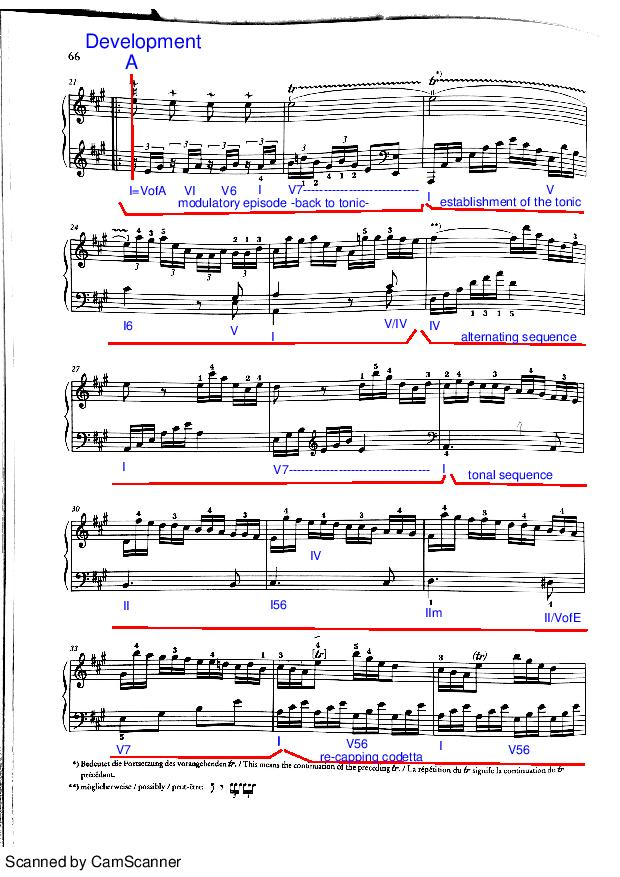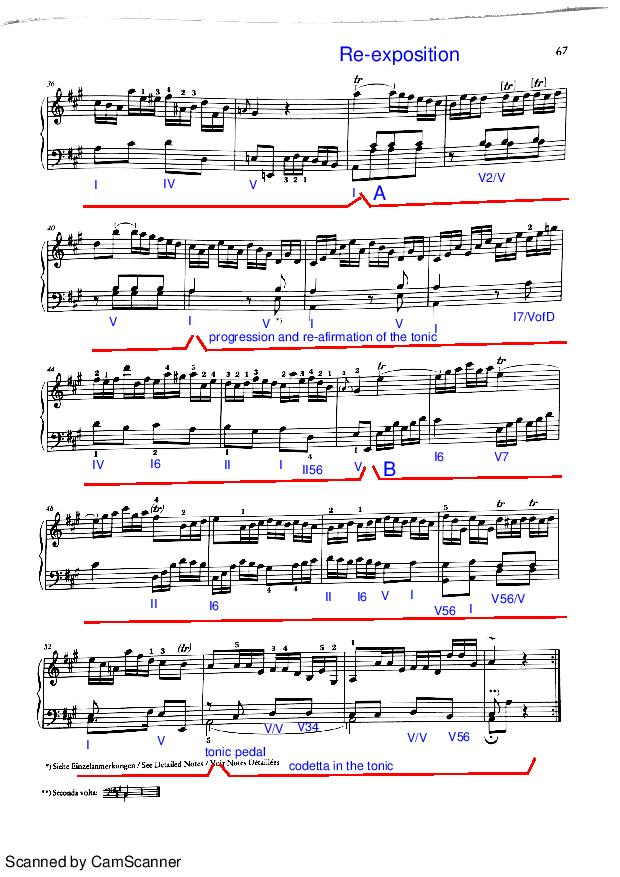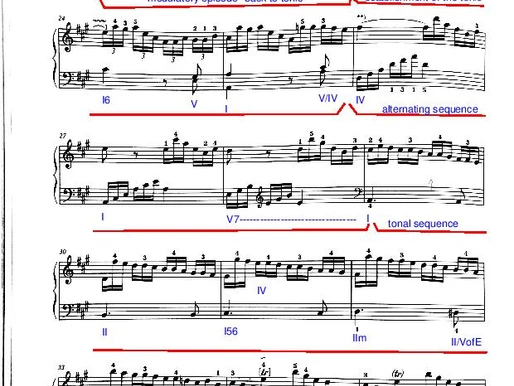Haydn Sonatas, Uncategorized
Haydn Piano Sonata Hob. XVI12 – Andante – Development and Re-exposition
DEVELOPMENT
One of this sonata’s main features is the fact that it hardly departs from the tonal centre. There are certain modulatory passages that we can easily spot, but the new keys are just touched once and left behind quickly to re-establish the tonic.
The progression at the beginning of bar 21 brings the tonal centre quickly back to A major. After that Haydn invests 2 bars alternating between tonic and dominant before heading into the subdominant on bar 26. Thematically-wise, the focus is placed on developing the chords through arpeggiated gestures. This strategy both explores the use and condensation of this feature, which in itself is strongly linked with all modulatory processes in this piece -e.g.: first modulatory episode starting on bar 4-.
Bar 25 is the beginning of a conversational passage that alternates bass and treble arpeggiated gestures once again, this time following a cadencial type sequence which brings the music back to the tonic on bar 29. At this point we arrive at what we can confidently categorize as the most expressive passage of this movement organized around a tone progression leading to the V7 at bar 33. The rhythmic material on the bass -dotted crotchet followed by quaver- is original of this section -some similarities can be drawn with bars 5, 6 and 41-43, much dryer and both modulatory processes- and maybe the most distinctive feature of the entire development section, along with the harmonic tone sequence itself.
At bar 24 we find the re-capping codetta that involves another original element: a periodic arpeggiated accompaniment. This feature collaborates with the introduction of the Perfect Authentic Cadence at bars 36 and 37 leading to the re-exposition.

RE-EXPOSITION
“A” is iterated in the exact same manner as it was on the exposition. “A” is followed by a progression that re-instates A major as the tonic in order to present “B” back on it. The rhythmic elements of this modulatory passage are, in the first two bars, the same as those of its analogous exposition’s counterpart. Bars 44 and 45 exhibit a much quicker harmonic speed, the fastest within the piece. This acceleration increases the tension and brings the music back to A major.
“B” is then re-exposed in the tonic without suffering any major changes. The movement finishes using a tonal pedal, which as well goes in line with the transposition process.

#Haydnproject #pianolessonslondon #HaydnProject #JuanRezzuto

